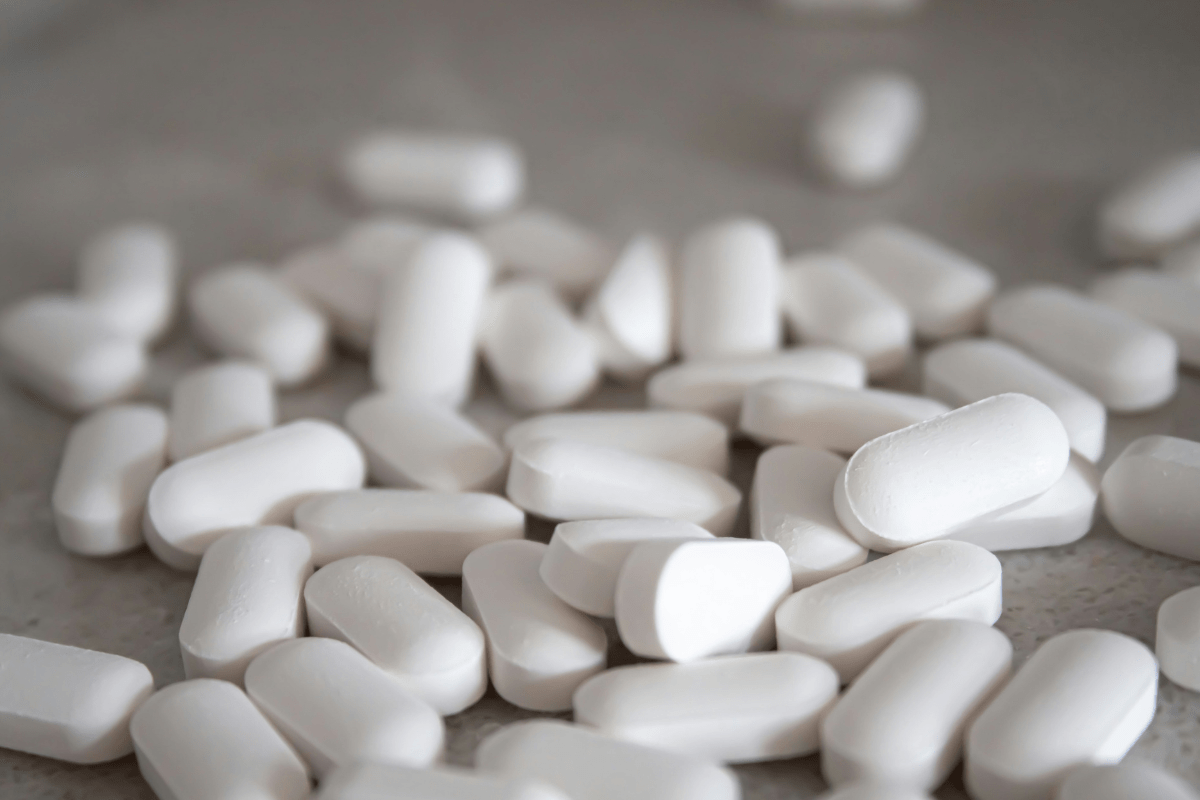Many people ask what is jardiance used for when starting empagliflozin. This SGLT2 inhibitor helps lower blood sugar and supports heart and kidney health. It is used alongside nutrition, activity, and other medicines. Knowing where it fits can help you weigh benefits and risks.
If you are newly diagnosed or reassessing treatment, a quick orientation helps. You’ll find how it works, who benefits most, and what to watch for. For broader context on glucose care and related therapies, see our Diabetes Category for curated overviews and updates at Diabetes Category to compare treatment pathways.
Key Takeaways
- Dual goals: lowers glucose and supports heart and kidney protection.
- Common issues: genital yeast infections, urination changes, dehydration risk.
- Timing matters: take consistently; discuss evening dosing if urinating at night.
- Interactions: diuretics and low-carb diets can raise dehydration or ketoacidosis risk.
- Plan ahead: pause before major surgery and during severe illness when advised.
What Is Jardiance Used For in Care
Clinically, empagliflozin is indicated to improve glycemic control in type 2 diabetes, and to reduce the risk of cardiovascular death and hospitalization for heart failure. It may also slow kidney function decline in appropriate patients. These benefits add up when combined with lifestyle support and other evidence-based therapies.
Think of it as a whole-cardio-metabolic tool, not just a sugar-lowering pill. That perspective helps when you and your clinician prioritize goals like fewer heart failure flares, safer A1C targets, and better day-to-day energy. Coverage and eligibility vary by history, kidney function, and other medications. Your plan should reflect your specific risks and preferences.
How It Works and Key Benefits
Empagliflozin blocks sodium-glucose transport (SGLT2) in the kidneys, causing more glucose to leave in urine. This gentle diuretic effect also reduces blood volume slightly, which can ease cardiac workload. Many patients notice small weight drops and a modest blood pressure reduction, which can contribute to broader wellness.
Beyond glucose control, researchers highlight jardiance benefits for heart and kidney outcomes in eligible patients. For current consensus statements that support these indications, the ADA Standards of Care summarize cardiometabolic benefits across risk groups; you can review the ADA Standards of Care ADA Standards of Care for high-level guidance. For comparisons within the SGLT2 class, this quick overview helps explain relative strengths; see Jardiance Vs Farxiga to understand class differences.
Jardiance Side Effects and Safety
Most people tolerate therapy, but side effects can occur. The most common are genital yeast infections, increased urination, thirst, and mild dehydration. Less often, urinary tract infections, dizziness, or low blood pressure may occur, especially in warm weather or with diuretics. Rare events include euglycemic ketoacidosis, severe urinary infections, and, very rarely, a necrotizing infection of the perineum.
It helps to learn the early signs of trouble and when to hold the medicine, such as prior to major surgery or during severe vomiting. The FDA labeling details risks and precautions in plain language; for authoritative safety specifics, review the FDA prescribing information FDA prescribing information to understand contraindications and warnings. For practical strategies to prevent and manage common issues, see Understanding Jardiance Side Effects to build your personal prevention plan.
When to Call Your Clinician
Seek medical advice if you develop severe genital irritation, fever with flank pain, fainting, or signs of ketoacidosis such as nausea, abdominal pain, or rapid breathing, even when your glucose is not very high. Contact your care team if urination becomes painful, if you notice swelling that worsens, or if you cannot keep fluids down. Pause before major surgery as directed, and ask about sick-day rules for gastroenteritis, fasting, or extreme exercise. Clear permissions help you prevent avoidable emergency visits.
Dosing, Timing, and Daily Routines
Take your dose at the same time each day with or without food. Consistency makes it easier to separate cause and effect if symptoms appear. If night urination disrupts your sleep, discuss a morning routine. Your clinician may also review fluids, caffeine, and other medications to fine-tune timing.
People often wonder what happens if you take jardiance at night; for some, evening dosing can increase nocturia due to the mild diuretic effect. Others do fine. If sleep or bathroom trips become an issue, explore a different schedule with your clinician. For structured titration tips and cautions, see Jardiance Dosage to align timing with daily life.
Interactions and Combination Therapy
This medicine is commonly combined with metformin, GLP-1 receptor agonists, or heart failure therapies. It can be paired with ARNI, ACE inhibitors, or beta-blockers under supervision. The biggest practical interaction is with diuretics, which can compound volume loss. Monitor dizziness, thirst, and kidney function more closely when combining therapies that move fluid.
Patients often ask can you take jardiance and furosemide together; combinations are common in heart failure but need monitoring for dehydration, low blood pressure, and kidney lab changes. If you use loop diuretics, discuss daily weights and threshold symptoms with your care team. For background on this diuretic class, visit the product page Furosemide to understand its role in fluid control. When comparing SGLT2s for combined regimens, this overview provides context; see Exploring Dapagliflozin Uses to see how class peers are used.
Food, Alcohol, and Preventing Infections
Consistent hydration and balanced meals support safer use. Low-carbohydrate or ketogenic diets may raise ketoacidosis risk with SGLT2 inhibitors, especially during illness or fasting. Alcohol can compound dehydration and hypoglycemia risk when combined with other agents. Moderation and a plan for sick days are important here.
People often ask about foods to avoid while taking jardiance; there is no forbidden list, but prioritize hydration, maintain regular carbohydrate intake, and avoid extreme fasting without medical guidance. Good hygiene helps prevent genital yeast infections: change out of wet clothing quickly and consider breathable fabrics. For a broader view of therapy choices that interact with diet, consult our Diabetes Drugs List to see how different classes can affect appetite and fluids.
Long-Term Use and Monitoring
Most benefits build gradually as part of a long-term plan. Kidney function and electrolytes should be checked periodically, especially when starting or changing other agents that affect volume. Weight, blood pressure, and symptom diaries can reveal patterns you might miss day to day.
It’s reasonable to ask about long term side effects of empagliflozin; serious events are uncommon but include ketoacidosis, severe urinary infections, and rare perineal infections. Balanace risks by reviewing sick-day guidance, surgery plans, and thresholds for holding medicine. For context on rare infections associated with SGLT2 inhibitors, the FDA safety communication is instructive; you can review the agency’s update FDA safety communication for background on signs to watch for.
Heart Failure Focus and Cardiac Protection
In heart failure, SGLT2 inhibitors reduce hospitalization risk across ejection fraction ranges, even without diabetes. Mechanisms include mild diuresis, lower preload and afterload, improved myocardial energetics, and kidney-heart crosstalk benefits. These effects can help stabilize symptoms between clinic visits when combined with guideline-directed therapy.
Patients often wonder how does jardiance help the heart; the answer involves both hemodynamic and metabolic pathways that ease cardiac strain. For a deeper look at cardiology applications, see Jardiance For Heart Failure to understand evidence across patient groups. If you are coordinating care with other agents like metformin in cardiometabolic patients, review Metformin And Heart Failure for context on benefits and cautions. Current cardiology guidance supports SGLT2 inhibitors as core therapy; you can browse heart failure guidelines heart failure guidelines for class-of-recommendation details.
Related Questions Patients Ask
Many people phrase the same idea in different ways, such as what is the medication jardiance used for. The answer stays consistent: glucose control in type 2 diabetes and risk reduction in heart failure, with kidney protection in suitable patients. Discuss personal goals, like fewer hospitalizations or better energy, and match those goals to your plan. If you want a quick comparison within the class, see Jardiance Vs Farxiga for side-by-side context. For product details and labeling access, visit Jardiance to review key facts with your care team.
Recap
Empagliflozin supports glucose control and cardiometabolic protection for many adults when used thoughtfully. You can lower risks by staying hydrated, planning sick days, and reviewing combination therapy. Small routine tweaks, like morning dosing or diary tracking, often make treatment more comfortable. Keep your care goals visible and adjust with your clinician as life changes.
Tip: Revisit your plan after illnesses, travel, or new prescriptions. Even small changes can shift hydration, glucose patterns, or side effect profiles.
This content is for informational purposes only and is not a substitute for professional medical advice.


